There are monitoring tools that “get the job done,” and then there’s Nagios XI, which truly understands how an IT infrastructure works. It’s not just about knowing whether a service is up or down. It’s about having full visibility, immediate response, and proactive control over increasingly demanding environments.
In this article, we break down how Nagios XI works on a technical level, what sets it apart, and why it’s the ideal solution for organizations that need much more than simple alerts.

Nagios XI Architecture: Overview
Nagios XI is widely used in corporate environments across Spain, Latin America, and Mexico, where the need for a robust and scalable architecture is key.
Nagios XI is built on Nagios Core, but adds layers of accessibility, customization, and efficiency that make it a complete IT monitoring tool. Its architecture consists of:
Centralized web interface for administration, data visualization, dashboards, and notifications.
Check execution engine, supporting both active and passive checks.
Backend database for storing historical data, alerts, and metrics.
Highly configurable notification and escalation system.
Plugins and agents to collect information from virtually any system or device.
All of this operates under a modular structure that allows the solution to easily scale, integrate with other systems, and adapt to environments of any complexity.
Active and Passive Monitoring
One of Nagios XI’s key features is its ability to combine active and passive monitoring:
Active monitoring: Nagios performs checks at defined intervals to verify the status of services and systems.
Passive monitoring: Agents or external services report status to Nagios, useful in environments with restrictive policies or remote nodes.
This combination allows for monitoring both internal services and elements in remote networks without direct access.
Additional Components and Tools
Thanks to the flexibility of Nagios XI, many organizations in markets like Chile and Mexico have implemented it to monitor critical services and keep operations under control.
Nagios XI includes tools designed to facilitate both deployment and daily operations:
Configuration wizards to easily add new hosts and services.
Custom dashboards for different user profiles.
Advanced availability and SLA reports, useful for audits and capacity planning.
Multi-tenancy, ideal for MSPs or large organizations with distributed IT teams.
Additionally, it supports thousands of community plugins and allows integration of custom scripts to meet specific needs.
Performance and Scalability
In projects managed by ToBeIT in Spain, Nagios XI has shown remarkable capacity to grow alongside client needs, enabling efficient management of distributed environments.
Nagios XI adapts to both small installations and large-scale distributed architectures. To achieve this, it offers:
Nagios Fusion: Allows you to visualize multiple Nagios instances from a single panel.
Distributed monitoring: Ideal for organizations with remote offices.
Agent support for Linux and Windows, making it easy to collect data from multiple environments.
Its efficient execution engine and modular design make it a robust option for complex infrastructures.
Where to See Nagios XI in Action?
To learn how Nagios XI is being implemented across different markets, you can visit our local pages. There, you’ll find details about solutions tailored for businesses in Spain, as well as specific initiatives in Chile and Mexico.
If you work with critical infrastructures and are looking for a tool that gives you real control, total visibility, and adaptability, Nagios XI is a solid choice.
At ToBeIT, we work as an official Nagios partner for Spain and LATAM, offering technical support, implementation services, and specialized consulting to help you get the most out of the tool.
Want a personalized demo or technical consultation?
Contact us, we are the official Nagios partner for Spain and LATAM.




